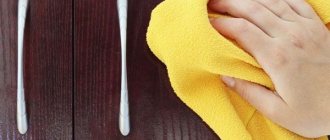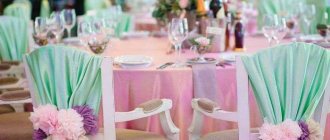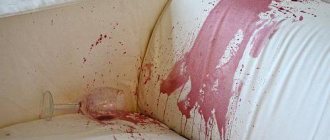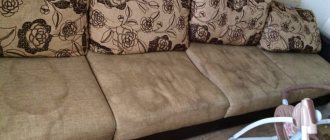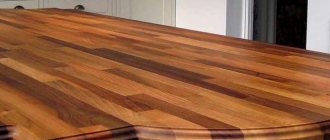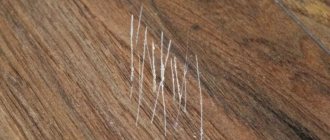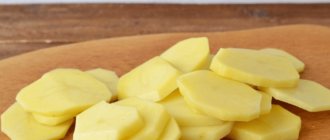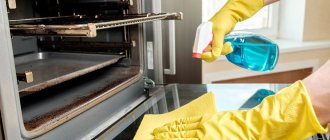You can remove white stains on furniture from alcohol, acetone, iron, water, as well as scratches, in various ways. Polishing, varnish regeneration, complete replacement of the varnish coating. It is more difficult to eliminate the consequences of independent efforts “with your own hands.” Most often, at home, they try to remove stains or scratches with furniture polishes or cleaning products. What you absolutely cannot do.
Using a polish to remove stains from a matte surface can result in a shiny spot on a matte background. The cleaner will leave a matte stain when removing stains from a glossy surface. surfaces. White spots are destroyed varnish. They are removed by removing the damage followed by polishing. They arise for various reasons, the consequence of which is the destruction of the film or its detachment from the surface of the wood.
How to remove stains from lacquered furniture
How to remove stains from furniture? Do you have lacquered furniture at home? What a score! This furniture classic will always be there. For those who regularly care for furniture, the question of how to remove stains from furniture may not arise. Simply because preventative work was carried out on time. So, let's take our experience into account. Special wipes impregnated with wax and antistatic are well suited for caring for lacquered furniture. They are also called “polishing”. By periodically wiping lacquered furniture with such a cloth, you can preserve its original appearance for a long time. As a result of the treatment, a thin film of wax is applied to the surface, which protects and adds shine.
How to get rid of white spots on furniture
The glue can be slightly heated with a hairdryer, so it will come off faster. Spots of unknown origin. Upholstered Upholstered furniture is especially sensitive to various kinds of stains. Share with your friends and rate the article: And it’s easy to explain! It is not always possible to fight them effectively.
By periodically wiping lacquered furniture with such a cloth, you can preserve its original appearance for a long time. As a result of the treatment, a thin film of wax is applied to the surface, which protects and adds shine. There are also many aerosols containing wax; they have proven themselves very well, as they not only clean the surface of dirt, but also protect it in the future.
Folk wisdom has prepared a worthy answer for manufacturers of special chemicals. If you don’t have a polishing cloth and a special aerosol for caring for lacquered furniture, arm yourself with vegetable oil, or better yet, burdock oil. A few drops should be applied to cotton wool. The cotton wool, in turn, needs to be wrapped in a soft cloth so that the oil only seeps out slightly.
Three ways to remove fresh white spots
Having wiped the furniture in this way, then polish it with a dry cotton cloth. Remove stains from lacquered furniture If they are quite old? Vegetable or burdock oil will help us again. You just need to add table salt to it. It is necessary to wipe dust from wooden surfaces as often as possible. This must be done correctly so that dust does not remain floating around and does not get clogged in the cracks.
Find a clean, soft cloth, preferably non-woven. Lightly moisten it before use.
In hardware stores you can find special tools for removing varnish from hard-to-reach places. These are classic feather dusters, special fabrics, lint-free lamb wool napkins, terry towels. Cleaning does not require any special skills from you, you just need to be careful.
Using all-purpose sprays may not achieve the desired results if your furniture has a plastic coating. But, as a rule, such coatings these days are used only in the manufacture of kitchen tables and children's furniture.
Varnished coatings can be easily cleaned with water, unlike pure wood. Try using a mixture of soap and water to remove sticky stains. To do this, soak a napkin in a warm soapy solution, and then wring it out until almost dry. You can use scrubs or other special cleaning products to remove dirt. They are available in stores in a wide range. Read the instructions for use carefully and follow.
And it's easy to explain! After all, the service life of such furniture is much longer, and lacquered furniture is much more respectable and representative. If you want to maintain the original ideal appearance of such furniture for a long time, then be prepared for the fact that from time to time you will have to carry out special and fairly thorough care for the wooden elements.
So what is included in the list of requirements for caring for wooden furniture with a varnished or matted surface and rattan furniture? Temperature and humidity conditions are very important for wooden products. The condition of wooden surfaces is adversely affected by direct sunlight and the direct location of furniture near heating devices.
Temperature limits are set from 2 to 40 degrees above zero. If the room is too damp, the varnish on the furniture will quickly fade and stains will form on the surface, and if it is too dry, the wooden surface may crack.
At the same time, the wax film, if well polished, will give the furniture a glossy finish. If the floor is uneven, then wooden wedges should be placed under the front legs of the cabinets. The oil should only seep through slightly. Wipe the furniture with this swab. When the stains are gone, brush off the ashes and wipe the cleaned area first with a damp and then with a dry cloth.
If the stain does not come off, repeat the procedure. Old stains should be covered with a mixture of table salt and vegetable oil, and after two to three hours, shake off the salt and wipe the furniture with a woolen cloth.
Do not use alcohol, acetone, or cologne for this purpose. From time to time it can be wiped with a damp swab, and if it is very dirty, wash it with warm soapy water and wipe dry. It is not recommended to use polishing agents for this type of furniture. Rub the cleaned metal with a cloth until it shines.
Baking soda, lemon juice, and an onion cut in half will give the same effect. If necessary, make a puncture or cut along the grain of the wood, put a little glue into the hole formed and iron it again. Wooden furniture is undoubtedly an interior decoration and deserves proper care.
First of all, you will learn from the manufacturer how to care for your furniture; you also need to care for varnished and unvarnished furniture differently. The difference between such surfaces is large. Furniture made from solid wood breathes freely, it is fragrant, absorbs and distributes odors around, absorbs and releases moisture and thus creates a healthy microclimate.
Solid wood treated with natural oils and waxes requires special care. The surface of solid wood furniture is not treated with stain or varnish; it is treated with natural waxes and oils. Unlike a varnished surface, on which local damage cannot be corrected, damage on solid wood furniture treated with waxes and oils, including the floor, can be fairly corrected. A properly treated surface is antistatic, repels dust and dirt and looks like new after many years if it is regularly and properly cared for.
Hints and tips. We wipe furniture only with a damp cloth. The scratch remover solution should be applied before cleaning the furniture.
How to clean polished furniture until it shines without chemicals
If you are not sure whether the solution matches the color of the furniture, it is better to choose a lighter shade. If you need to remove fingerprints or grease stains from the surface of the furniture, and you are not sure whether the wood is varnished, use matting wax.
It will also suit such specific wood as pine, oak or teak wood. Pour nourishing oil for unvarnished wood onto the surface directly from the bottle and rub with a sponge. When working with waxes, you need to use a dry and clean cloth.
Glass hydrophobia
We use special sponges to remove stains
Excessively hard tap water can be the enemy of glass furniture. Removing her stains is not easy. Here are the basic tips that will help in this difficult matter:
- For fresh stains, use special “magic eraser” sponges.
- Special soap pads made of steel wool have proven themselves to be effective.
Baking Soda Superpower
Baking soda to remove stains
For heavily neglected surfaces covered with old hard water stains, first treat them with vinegar, leave for half an hour, then rub with baking soda and remove any remaining dirt. As a radical remedy, use a paste of vinegar and soda.
The tooth fairy is resting
Using toothpaste to remove stains on furniture
Regular toothpaste will replace a too aggressive mixture of soda and vinegar:
- rub it with a damp towel over the surface of the stain;
- wait ten minutes;
- rinse with a water solution of vinegar.
Lemons in vinegar is a theme
Acetic acid and lemon juice are an excellent cleaning agent that does not leave streaks on glass furniture. Pour the mixture, slightly heated for half a minute, into a container with a spray bottle. Apply it to the glass and wait three minutes. Wipe with a lint-free non-woven cloth.
Apply citric and acetic acid from a spray bottle
The Kings Last Argument
We use acids with great care
If the methods described above did not help, the following will help your glass coffee table achieve enlightenment:
- sulfamic acid – soluble in water, does not require special disposal methods;
- hydrochloric acid – used in a concentration of no more than 15%;
We hope that our tips for dealing with stains will help you out in difficult times. But if they don’t help, use the services of a cleaning company that specializes in professional cleaning of furniture and premises.
Professional furniture cleaning with special products
Renewing old polish and removing dirt on the chair
How to Remove Stains from White Lacquered Furniture
What and how you can remove various stains from furniture, removing coffee stains, hot stains, combating food traces. How to make furniture look attractive again at home. To quickly get rid of white spots on furniture made of such material, you can immediately try the following methods: Burdock oil. They need to wet a cotton swab and wrap it in cotton cloth. Greasy marks on lacquered furniture. Can be removed using regular talcum powder. Apply it to the surface and leave for 10 minutes.
How to wipe furniture to make it shine
Over time, the polished surface of furniture loses its glossy shine. This is due to direct sunlight and improper care of the varnish coating. Manufacturers of household chemicals produce products that restore the mirror shine of polished home fittings. The composition includes various waxes and antistatic agents.
Furniture will shine if you clean it with a homemade polish. The basis of such a preparation is any vegetable oil. Turpentine is added to it in a ratio of 1:1 or kerosene, for 1 part oil - 5 parts kerosene.
Mix 1 tbsp. l. any shampoo and liquid antistatic agent, pour 8 tbsp into the resulting mixture. l. water. The resulting solution will thoroughly clean polished surfaces from dirt and prevent dust from quickly settling on bedside tables and cabinets.
Do not clean the varnished surface at home with aggressive substances: alcohol, acetone, acids, alkalis. Avoid abrasive powder products. Caring for polished, shiny furniture should be gentle. Compliance with all the rules will provide lacquered interior items with a luxurious appearance and extend their service life.
Source: uborkapro.info
How to clean lacquered furniture at home
Then you will need to wait until the nut oil penetrates deeply and polish the surface. Dip a cotton pad into it and wipe the stain. They are applied to the furniture and, after drying, removed with a vacuum cleaner. Three ways to remove fresh white spots Paraffin wax. Important addition To make stains on polished furniture easy to clean and appear as rarely as possible, you should remember: Wipe the furniture with it. The cup holder also leaves behind white marks on the furniture:
An important addition Even for careful owners, lacquered varnish gets dirty. Most often this is the appearance of white spots on the surface.
If a stain has formed on wooden furniture
Removing such furniture is easy if you get down to business right away. But often you have to struggle with removing stains, which are already more difficult to remove. Find out the simplest home methods on how you can safely remove stains from white lacquered furniture, stains from home furniture and not spoil them. All this will certainly leave its mark.
How to remove stains on an unpolished surface yourself?
To quickly get rid of white spots on furniture made from stained material, you can immediately try the following methods: Burdock stain. They need to moisten a cotton pad and wrap it in cotton cloth. This way, a small part of the oil will be removed through the fibers of the fabric.
Use the resulting product to wipe the stained area. After this, remove any remaining greasy residue using a clean, soft cloth. Iron and candle. To do this, you need to take a regular colorless paraffin or wax candle. Rub a white mark on it. Place a varnish cloth on top of the contaminated area. Heat the iron and how to remove stains from white lacquered furniture scarf.
In addition, known to all housewives, white water stains have destructive properties in relation to the material. After reading this article, you will learn how to remove white stains from furniture at home. Causes of appearance The cause of damage lies in direct contact of the wooden surface with a hot object, since the fragile and thin paintwork is very sensitive to high temperatures.
It is better to use the steam option on the device. The wax should melt very slowly. If varnished, exposure to steam can cause the stain to increase, so do not set the temperature on the iron too high and do not keep it on the surface for more than 1 minute.
Reasons for appearance
The cause of damage lies in direct contact of the wooden surface with a hot object, since the fragile and thin paint coating is very sensitive to high temperatures. The chemicals used to protect the top layer of furniture begin to oxidize and burn the wood at high temperatures.
Therefore, placing a hot pot, frying pan or glass on a wooden surface will result in an unattractive white stain.
The soft material of a towel or kitchen napkin will prevent damage, but the outcome of such protection can be unpredictable: it all depends on the temperature of the item and the furniture covering. The cup holder also leaves behind white marks on the furniture: these are called steam stains because the resulting chemical reaction is caused by the steam from the hot object.
Among all kitchen problems, removing such damage is one of the most difficult, but not hopeless tasks. Successful removal of a white spot of envy depends on many factors: the finishing of the furniture, the wood material, the polish or sealant used to protect the furniture, and the degree of burn on the surface play a big role.
Before using the selected products, you must first test them on a small, inconspicuous area so as not to provoke the appearance of new white stains.
There are many time-tested options for how to remove defects on furniture at home.
How to remove stains from wooden furniture?
Varnishing in each case requires a special approach and a more careful selection of products. It is important to remember that potent chemicals are completely contraindicated. They are not only dangerous to humans, but can also cause serious harm to objects.
How to remove various stains from tables and other objects: Greasy marks on lacquered furniture. You can remove stains from white lacquered furniture using regular talcum powder.
Apply it to the surface and remove stains from white lacquered furniture for 10 minutes. After this, remove the talc and wipe with a napkin. Raw potatoes will also help.
Other troubles How to clean polished furniture to a shine and remove stains at home Add a little crushed white wax to it and heat until the wax melts. It is necessary to smear the stains with this mixture, not very hot, and rub with a linen cloth until they disappear. The surface of mahogany furniture is wiped with tea or vinegar and then with a soft, dry cloth.
Wash the vegetable, cut it in half and apply the cut to the area of contamination for 1 minute. You can wash off cosmetics, pencils, and markers using a light solvent.
Be sure to use nail polish remover without acetone. Traces of chocolate, juices and other products will be removed by dishwashing detergent. Cigarette ash. You need to prepare a soft, fatty paste from it. Mix 1 tbsp. Apply to dirt. Wait 10 minutes, wipe with a clean cloth. Flour and vegetable oil will remove old water stains. First, sprinkle the area with flour and drop some oil on top. Rub gently and leave to act for 15 minutes.
After this, remove all components and wipe the furniture with a clean, dry cloth. A universal product that will help remove fresh stains. Warm milk and soap solution. Grate a small piece of laundry soap and dissolve it in warm milk. Treat the varnished surface. Rub the treated areas dry. If the origin and nature of the contamination is well known, it is much easier to remove it. But sometimes it is simply impossible to identify traces.
When the origin of the stain is unknown. In this case, the following universal remedies are suitable: Dilute it in half with warm water and wipe the stained area. Use this component only for red and dark brown furniture. An alcoholic drink will also help restore the interior. Beer needs to be warmed to room temperature or slightly higher. Moisten a cotton pad and wipe the area on the table. Sprinkle the stain with table salt and pour vegetable oil on top.
Leave for 15 minutes. After this, remove traces of salt and oil with a clean napkin and rub with a polishing compound. Red wine and vegetable oil. Using these two components, you can not only remove a stain, but also disguise small scratches. Mix 1 tbsp. Apply the composition to the desired location using a cotton pad. Leave for 30 minutes. Remove any remaining composition and rub. Lemon juice and vegetable oil. Mix both ingredients in equal quantities and apply to the surface.
Wait 15 minutes, then remove any residue. In this way, you can not only remove traces, but also fight the smell of tobacco smoke, which is easily absorbed into the furniture. Lacquered can remove damage that is small in size and depth. Apply it to the area and how to remove stain from white lacquered furniture 20 minutes. Then remove the residue and grate. Any chosen product must be completely removed after use. Immediately after the specified period, areas of furniture are wiped dry.
Additionally, you can use polishing compounds. They will significantly improve your appearance.
Fabric upholstery
Before treating problem areas on upholstered furniture, you need to vacuum it.
You can use various products to combat stains. The simplest and most universal is a dishwashing gel solution. Dissolve a small amount of liquid in warm water and mix vigorously. The resulting foam is applied to the contaminated area and left until it has completely settled. Then use a soft sponge to rub the stain from the edges to the center (this way there will be no streaks), and then wipe it several times with a damp cloth. Leave to dry.
Drink Stains
You can wash the upholstery from dark traces of coffee, tea, juice, beer or hot chocolate using a bar of laundry soap. Moisten a bar of soap with water and rub it onto the stain. Leave for 30 minutes, then gently rub with a damp piece of gauze, collecting any remaining foam and dirt.
You can remove beer, tea or cocoa stains from furniture fabric by treating the upholstery with a soapy solution. To do this, a small amount of shavings obtained from a finely grated piece of soap is stirred in warm water. Moisten a sponge with liquid and apply to the stain. In another container, combine a liter of cold water and a tablespoon of 9% vinegar. Use a cotton pad soaked in vinegar water to wipe the problem area. Blot wet upholstery with a paper towel.
Fruit and vegetable juices are removed with a solution of vinegar and ammonia. Both liquids, taken in equal proportions, are combined and moistened with a cotton pad. Rub the stained area. Moisten the disc again and treat the stain. Do this until traces of juice disappear. Then wipe the upholstery with a clean, dry cloth.
Oily stains
To cope with traces of grease on upholstered furniture, you can use various available means:
- Rubbing alcohol and baking soda with salt. Sprinkle a mixture of salt and soda on the stained area and leave for 20 minutes. Clean off the powder with a brush and place a cloth soaked in alcohol on the stain for half an hour. After removing the napkin, rub the dirt with a brush. The remaining product is removed with a damp sponge.
- Vinegar. A cotton pad is moistened with vinegar and placed on the stain. Leave it for a while. After 20-30 minutes, rub the upholstery with a brush. Then wipe with a damp, clean cloth.
- Kerosene or gasoline. Use in the same way as vinegar.
- Turpentine. The container with turpentine is heated in a water bath. Warm liquid is applied liberally to the stain and left for a couple of hours. Afterwards, remove with a paper towel, and sprinkle the upholstery in the area of contamination with a large amount of baking soda. After 10 minutes, remove the powder with a brush and wipe the fabric with a rag moistened with soapy water. Remove the foam with a damp, clean sponge and wipe dry with a napkin.
- Lemon juice. Fresh juice from one large fruit is combined with 2 tablespoons of vinegar. Moisten a cotton pad with this solution and leave it on the stain for a quarter of an hour. Afterwards, treat with a sponge moistened with soapy water. Remains of foam are removed with a clean damp cloth. Wipe with a dry cloth.
- Wheat bread. The crumb is moistened with water and formed into a ball. Roll the ball over the greasy stain, directing it from the edges to the center.
White spots on furniture. How to get rid
Important addition To ensure that stains on polished furniture are easy to clean and appear as rarely as possible, you should remember: Do not place hot dishes on an open surface. You must place a special stand under the mug or plate. If the stain could not be avoided, then before looking for a way to remove it, be sure to check for deformation. If only a change in the color of the polished surface has occurred, only the most gentle properties can be used.
The secret to quickly removing white stains from the table
Be careful when working with red furniture. It is better to conduct a small test on an inconspicuous area to assess the quality of the coating. If there are no changes, only then proceed to the main process. Always strictly adhere to temporary recommendations.
Set the temperature to medium and methodically dry the surface for minutes. It is easier to remove traces of tape from wooden furniture if you soften them with any vegetable oil. Apply it for a few seconds and then scrape it off. Simply wash stains of juice, wine, chocolate with a neutral detergent, blot a napkin with it and apply it to the stain for a couple of minutes, and then dry the area with another dry napkin. The evidence of your wrongdoing will be a larger, white spot on the surface of the table. Then polish with a flannel cloth.
Stains from iron, hot and direct sunlight
White spots are left behind by cups of hot drinks. Very ugly marks in the shape of crescents and circles are a result of exposure to hot cans, glasses, bottles.
When heated, the polymer, which is any modern varnish, changes its density, therefore, the physical properties change, namely transparency. This happens throughout the entire finishing depth. Elimination - complete replacement in a restoration workshop by a professional restorer using special equipment.
How to remove stains from wooden furniture?
If wooden furniture is a household item and not a museum exhibit, it is difficult to protect it from various kinds of stains. Someone in the household might put a hot mug on the countertop, someone might spill coffee, wine or water, put a piece of fatty food, etc. Or little children and grandchildren will try - they will paint the cabinet doors with pencils or ink.
It should be said right away that not all stains on furniture are equally simple and can be removed independently. There are some that only specialists with their work experience, professional tools and compositions can do. But some “traces of human activity” still need to be eliminated using means from the arsenal of folk wisdom.
How to remove stains on an unpolished surface yourself?
Unpolished furniture can develop a variety of stains over time, including:
- Fatty. It is almost impossible to remove them from wood yourself, especially if we are talking about soft woods that absorb grease perfectly and deeply. However, you can try. For example, sand the contaminated area with sandpaper. Just don’t get carried away with the process; you need to stop often (literally after each “cycle” of 3-4 movements), sweep away the resulting wood dust and check the result.
By the way, if the stain is fresh, you can eliminate it with a regular soap solution . But you need to act immediately, as soon as the fat gets on the wood. There is another original way to get rid of greasy wax stains on furniture. You need to take a knife, dip its blade into boiling water (for 15-20 seconds, no longer), then remove the wax drop with a blunt edge. The freed surface should be wiped with a cloth soaked in gasoline, and then polished with a soft cloth. - White spots from water. You can try to “defeat” them using a hot iron (at low temperature and without steam ). The stained surface will need to be covered with a towel and then run the iron over it. However, this must be done very quickly so as not to damage the furniture with a hot household appliance, otherwise it will turn out even worse. You can also try removing white spots from an unpolished surface with lemon oil. Wipe the stain with a cloth soaked in it, and then “scrub” (lightly, without force) with a steel wool. At the end of the process, treat the area of the former blot with denatured alcohol.
- Spots of unknown origin. And this also happens. Contamination appears on a cabinet or table, but no one remembers the cause. Then you need to act with a cotton cloth, generously soaked in milk . A solution of laundry soap can also help. And be sure to polish the treated surface with a piece of velvet or wool at the end of the procedure.
- Lime or chalk stains can be removed with table vinegar.
- Fresh coffee stains can be wiped off with an ammonia solution or ethyl alcohol solution.
- Chocolate stains, as well as stains from juices and wines, can be removed using the most common detergents. A napkin generously soaked in them is placed on the stain for a couple of minutes, and then the surface is blotted with another napkin, but this time dry.
- Acetone (or a similar solvent) can be used to remove stains left on furniture by nail polish, decorative cosmetics, colored pencils or felt-tip pens. But you need to act very carefully here so as not to discolor the actual surface of the wood.
- Shoe paint or shoe polish is removed with special products that can be purchased at any hardware store.
How to remove stains from furniture polish?
Unfortunately, the surface of polished furniture is also not immune to the appearance of all kinds of stains on it. Some are more difficult to deal with than similar ones on unpolished objects, while others are a little easier. In any case, you should try to get rid of the stain yourself before contacting a specialist. Moreover, there are contaminants that can be easily removed using folk recipes:
- Water marks on polishing can be removed with a swab dipped in vegetable or machine oil. Or remove it with a mixture of cigarette ash and vegetable oil. And if such a stain has just appeared, it can be easily wiped off with a regular school eraser, and then treat the cleaned area with a professional polish.
- The rim left on the polish after a wet glass can easily be “rubbed off” with a cut of a walnut kernel . Then you will need to wait until the nut oil penetrates deeply and polish the surface.
- It is enough to wipe the varnish infested with flies with a rag soaked in kerosene.
- Green paint or ink can be removed even from light polishing. To do this, the spilled liquid is thoroughly blotted, and its trace is erased with a school eraser.
- Traces from a hot iron or kettle on the varnish are “treated” with a mixture of oil and salt. Or you can rub the stained surface with paraffin, line it with a blotting cloth and lightly press it with an iron, but this time warm.
- White plaque from polishing is removed with a small amount of toothpaste. If the whitish stain turns out to be particularly persistent, it is recommended to mix the paste with regular baking soda on the tip of a knife. Then the remaining composition is removed with a damp cloth, and the surface is dried and polished with a soft, dry cloth.
- Grease stains and fingerprints from varnish are removed with talcum powder.
- And candle wax is removed from polished furniture in a very original way. Ice (literally a few cubes) is placed in a plastic bag. The bag is then placed on the wax spot and held until the wax becomes brittle. The removed candle drop is removed with a spatula or the blunt surface of a knife blade, and the freed surface is wiped with a soft rag soaked in a warm solution of apple cider vinegar (1:10).
- If a piece of paper is stuck tightly to a polished tabletop, just drop some olive oil on it. Wait 15-20 minutes and then remove everything with a soft cloth.
- A “burn” from a cigarette or match that does not penetrate the varnish can be removed from furniture with mayonnaise! You will need to pour the sauce onto the stain, wait a few minutes, and then wipe it off with a damp cloth and polish the area with a dry cloth.
- You can remove fresh fat from the polishing by cutting off a raw potato. Then there will be no trace of the recent stain left on the surface of the table or cabinet.
- If a piece of tape sticks to the polish, do not just tear it off - you can damage the furniture surface. It is better to drop some alcohol onto the tape and then go over it with a sponge soaked in a solution of dishwashing detergent. The tape will come off easily.
It is very possible that polished furniture made of natural wood, which has been serving for many years, has old stains. These should be thickly coated with a mixture of table salt and vegetable oil. And leave for 2-3 hours . Then shake off the remaining composition and rub the surface with a dry velvet cloth or a piece of wool.
Simply clean polished furniture that is dirty (dust, soot, etc.) with a well-wrung out cloth soaked in a weak vinegar solution. And then they polish it with a completely dry cloth or using transparent shoe polish.
Light beige and white furniture is cleaned by cutting an onion, and then also polished with a dry cloth.
Cleaning complex contaminants
Folk remedies also help to cope with difficult stains. In particular, to clean surfaces, you can sprinkle problem areas with flour and then wipe with vegetable oil.
Traces from hot dishes
To remove such marks, just put a small amount of salt in a cloth, roll up the bag and wipe the furniture. Then the surface must be treated with vegetable oil.
Wax drops
To get rid of the wax, you need to heat the knife and pry out the drops. After this, the problem area is rubbed with gasoline.
Ink stains
A mixture of beer and wax helps get rid of ink stains. This composition does not need to be boiled first. After treating stains, the mixture should be immediately washed off with water.
Heavy soiling
Heated 9% vinegar can remove such stains. You need to moisten a cotton swab in this liquid and then wipe the problem area.
Cleaning away traces of flies
White wine helps with such traces without adding other ingredients.
Unknown origin
To remove any stains, you can use vegetable oil, which should be mixed with ethyl alcohol.
Fat
Traces of fat can be easily removed with leftover tea leaves wrapped in cotton cloth.
Protecting wooden furniture from stains
Stains on wooden furniture are always a problem. It is not always possible to fight them effectively. Sometimes even experienced furniture makers and restorers cannot do this. Therefore, it is better to try to prevent trouble - to treat home furnishings with a protective compound.
Today, manufacturers offer a variety of polishes and impregnations that can protect both polished and unpolished furniture wood from stains of various origins. Most often these are compositions with natural beeswax and/or silicone, capable of forming a reliable, but thin and transparent film on the surface of the wood. After using them, the furniture not only does not lose its visual appeal, but also acquires a naturally fresh natural shine.
What might you need?
You can clean varnished surfaces using:
- soft cloth;
- cotton swabs;
- leather (it is recommended to take soft and thin skin);
- a brush with soft bristles.
To clean polished home furnishings, you will need not only cleaning products, but also a knife to remove serious stains.
Soft flannel or cotton cloth
Flannel and cotton fabric practically do not electrify varnished wood and do not leave streaks. Therefore, it is often recommended to wipe furniture with this material.
Cotton swabs
Cotton wool is used to clean stubborn stains.
Pieces of soft leather
Soft leather is recommended to be used to add shine after cleaning from dirt.
Soft brush
This brush is used to remove stubborn stains. After polishing with such products, no scratches remain.
Water containers
When cleaning furniture, you will need any containers with a wide neck: buckets, pans, or others.
Knife for removing serious stains
The knife is used only in cases where other cleaning methods have failed.
